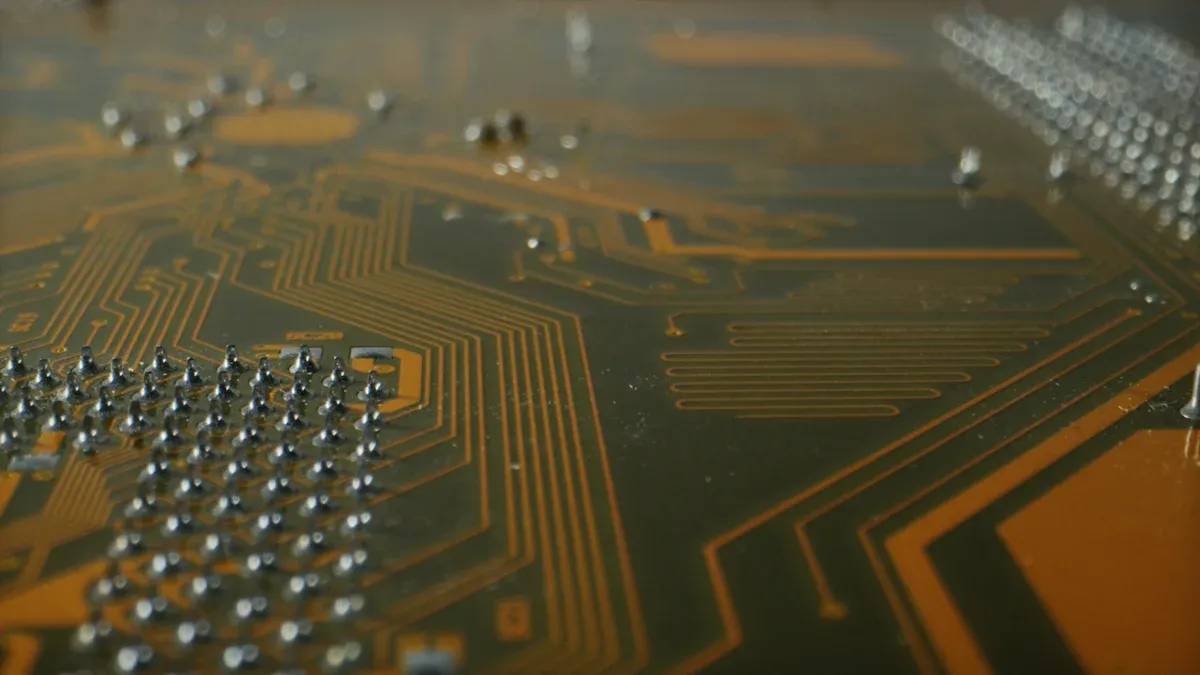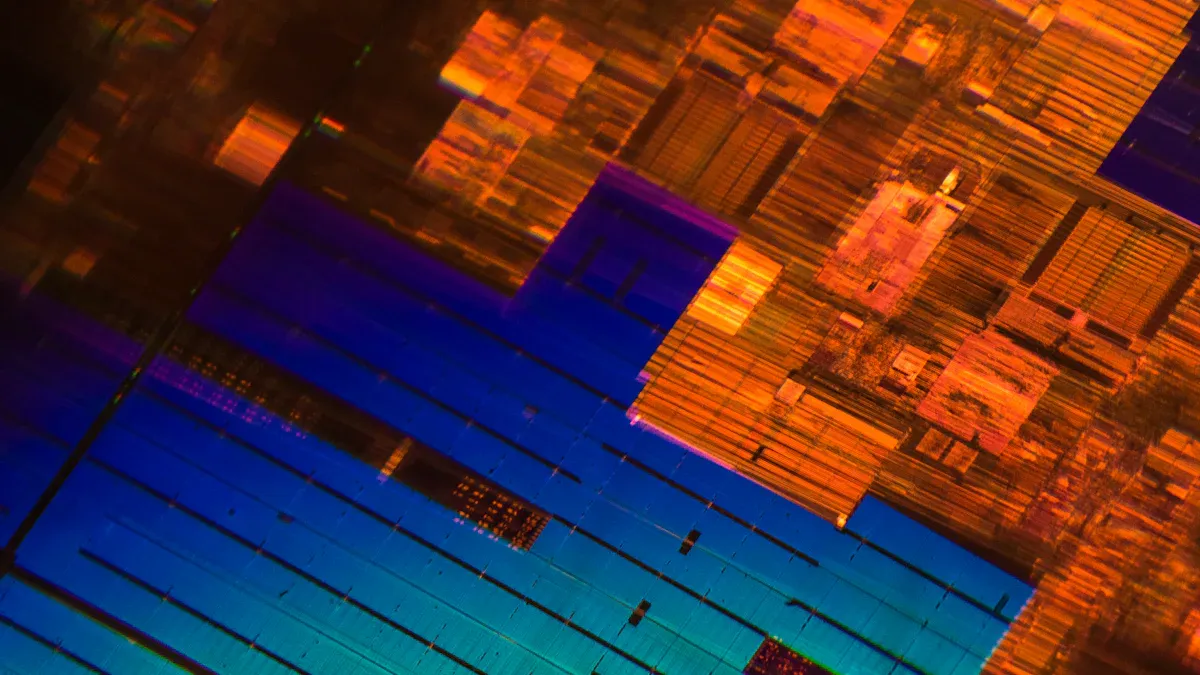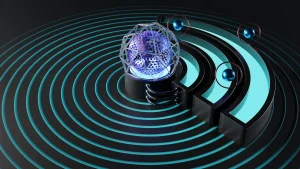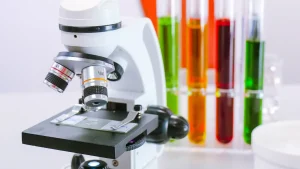
Silicon Carbide Epitaxial Wafer technology is reshaping the semiconductor industry. You can see its impact in modern power electronics, where efficiency and durability are critical. Unlike a 12 inch Silicon Wafer or a 6 Inch P Type Silicon Wafer, SiC wafers handle higher voltages and temperatures. This makes them essential for renewable energy systems and electric vehicles.
Key Takeaways
- Silicon Carbide Wafers work better than regular silicon wafers. They can handle more heat and voltage, perfect for electric cars and green energy systems.
- Bigger 200mm and 8-inch SiC wafers help make more products faster. They cost less and work better for powerful machines.
- Improved ways to make these wafers lower costs and make them easier to get. This helps more industries start using them.
Understanding Silicon Carbide Epitaxial Wafers
What are Silicon Carbide Epitaxial Wafers?
Silicon Carbide Epitaxial Wafers are advanced semiconductor materials designed for high-performance applications. These wafers consist of a thin layer of silicon carbide grown on a substrate. This process, called epitaxy, creates a highly uniform and defect-free surface. You’ll find these wafers ideal for devices that require high efficiency and reliability. Their unique properties make them stand out in the semiconductor world.
Key features and advantages over traditional silicon wafers
Silicon Carbide Epitaxial Wafers offer several advantages over traditional silicon wafers. They can handle higher voltages and operate at elevated temperatures without degrading performance. Their thermal conductivity is superior, allowing better heat dissipation. Additionally, these wafers exhibit exceptional durability, making them suitable for demanding environments. Unlike silicon, they reduce energy losses, which improves overall efficiency. For you, this means devices built with these wafers last longer and perform better.
Applications in power electronics, EVs, and renewable energy
You’ll see Silicon Carbide Epitaxial Wafers widely used in power electronics, electric vehicles (EVs), and renewable energy systems. In power electronics, they enable smaller, more efficient devices. For EVs, they improve battery performance and support faster charging. In renewable energy, these wafers enhance the efficiency of solar inverters and wind turbines. Their ability to handle high power and extreme conditions makes them indispensable in these fields.
Latest Advancements in Silicon Carbide Epitaxial Wafer Technology

Introduction of 200mm and 8-inch SiC wafers
The introduction of 200mm and 8-inch Silicon Carbide Epitaxial Wafers marks a significant leap in semiconductor technology. These larger wafers allow manufacturers to produce more devices from a single wafer, increasing efficiency. You benefit from this innovation because it reduces production costs and improves scalability. Larger wafers also enhance the performance of high-power applications, making them ideal for electric vehicles and renewable energy systems.
Tip: Larger wafers mean fewer defects and better device reliability, which translates to longer-lasting products for you.
Improvements in epitaxial growth processes and wafer quality
Advancements in epitaxial growth processes have significantly improved wafer quality. Modern techniques ensure a more uniform layer of silicon carbide, reducing defects and enhancing performance. You’ll notice that devices built with these wafers operate more efficiently and reliably. Improved wafer quality also means better thermal management, which is crucial for high-power applications. These advancements make Silicon Carbide Epitaxial Wafers a preferred choice for industries requiring precision and durability.
Cost optimization and manufacturing innovations
Cost optimization remains a priority in the production of Silicon Carbide Epitaxial Wafers. Manufacturers have adopted innovative methods to streamline production and reduce waste. For example, recycling unused materials during the wafer fabrication process helps lower costs. Automation in manufacturing has also increased efficiency, ensuring you get high-quality wafers at a more affordable price. These innovations make it easier for industries to adopt this cutting-edge technology without breaking the bank.
Trends Driving the Adoption of Silicon Carbide Epitaxial Wafers
Increasing demand in electric vehicles and fast-charging infrastructure
You’ve likely noticed the rapid growth of electric vehicles (EVs) in recent years. This shift has created a need for more efficient power systems and faster charging solutions. Silicon Carbide Epitaxial Wafers play a critical role in meeting these demands. They enable EV powertrains to operate more efficiently, reducing energy losses and extending battery life. Fast-charging stations also benefit from these wafers, as they can handle higher voltages and temperatures. This means quicker charging times for your EV without compromising safety or performance.
Role in renewable energy systems and grid efficiency
Renewable energy systems, like solar panels and wind turbines, rely on efficient power conversion. Silicon Carbide Epitaxial Wafers improve the performance of inverters, which convert energy into usable electricity. You’ll find that these wafers help reduce energy losses, making renewable systems more cost-effective. They also enhance grid efficiency by managing high-power loads more effectively. This ensures a stable and reliable energy supply, even during peak demand periods.
Adoption in industrial and high-power applications
Industries that require high-power equipment, such as manufacturing and data centers, are increasingly adopting Silicon Carbide Epitaxial Wafers. These wafers improve the efficiency and durability of devices like motor drives and power supplies. For you, this translates to lower operational costs and reduced downtime. Their ability to withstand harsh conditions makes them ideal for industrial environments, where reliability is crucial.
Market Dynamics of Silicon Carbide Epitaxial Wafers
Key players and their contributions to the SiC wafer market
You’ll find that several companies are leading the Silicon Carbide Epitaxial Wafer market. Wolfspeed, STMicroelectronics, and ON Semiconductor are some of the key players. Wolfspeed focuses on producing high-quality wafers for electric vehicles and renewable energy. STMicroelectronics has invested heavily in expanding its production capacity to meet growing demand. ON Semiconductor specializes in developing cost-effective solutions for industrial applications. These companies drive innovation and ensure a steady supply of wafers for various industries.
Regional growth trends and investment opportunities
The demand for Silicon Carbide Epitaxial Wafers is growing rapidly across different regions. Asia-Pacific leads the market due to its strong manufacturing base and increasing adoption of electric vehicles. Europe is also investing heavily in renewable energy projects, creating opportunities for wafer manufacturers. In North America, government initiatives supporting clean energy and advanced technologies are boosting demand. You can see significant investments in research and development, especially in countries like China, Germany, and the United States. These trends highlight the global potential of this technology.
Challenges in production and market competition
Producing Silicon Carbide Epitaxial Wafers comes with challenges. The manufacturing process is complex and requires advanced equipment. This makes it difficult for new companies to enter the market. High production costs and limited raw material availability also pose hurdles. Additionally, competition among established players is intense. Companies must continuously innovate to stay ahead. For you, this means the market will likely see improvements in quality and cost-efficiency as manufacturers tackle these challenges.
Future Potential of Silicon Carbide Epitaxial Wafers

Predictions for market growth and technological advancements
The market for Silicon Carbide Epitaxial Wafer technology is expected to grow rapidly in the coming years. You’ll see this growth driven by the increasing demand for energy-efficient devices and the expansion of electric vehicles. Analysts predict that the global SiC wafer market will reach new heights as manufacturers continue to innovate. Improved production techniques will likely reduce costs, making these wafers more accessible. You can expect advancements in wafer size and quality to further enhance their performance in high-power applications.
Emerging applications in aerospace, defense, and IoT
Silicon Carbide Epitaxial Wafers are finding new applications in aerospace, defense, and the Internet of Things (IoT). In aerospace, these wafers improve the efficiency of power systems in satellites and aircraft. For defense, they enhance the durability and reliability of radar and communication systems. In IoT, you’ll notice their role in powering smart devices that require high efficiency and compact designs. These emerging applications highlight the versatility of SiC wafers in addressing modern technological challenges.
SiC wafers as a cornerstone of next-generation semiconductors
Silicon Carbide Epitaxial Wafers are becoming the foundation of next-generation semiconductors. Their ability to handle extreme conditions makes them ideal for future technologies. You’ll see them powering innovations in renewable energy, electric vehicles, and industrial automation. As the demand for high-performance devices grows, these wafers will play a central role in shaping the semiconductor industry. Their unique properties ensure they remain at the forefront of technological progress.
Silicon Carbide Epitaxial Wafers have revolutionized the semiconductor industry. Their ability to improve efficiency, durability, and performance makes them essential for modern technologies.
Continued innovation in SiC technology ensures better solutions for power electronics and renewable energy.
You can expect these wafers to drive future advancements, shaping a more sustainable and efficient world.
FAQ
What makes Silicon Carbide Epitaxial Wafers better than traditional silicon wafers?
Silicon Carbide wafers handle higher voltages and temperatures. They improve energy efficiency and durability, making them ideal for demanding applications like electric vehicles and renewable energy systems.
Are Silicon Carbide Epitaxial Wafers cost-effective?
Yes, advancements in manufacturing and material recycling have reduced costs. These wafers now offer high performance at competitive prices, making them accessible for various industries.
Where can you find Silicon Carbide Epitaxial Wafers being used?
You’ll find them in electric vehicles, renewable energy systems, industrial equipment, and aerospace applications. Their versatility makes them essential for high-power and high-efficiency technologies.
Note: As demand grows, expect even more industries to adopt this transformative technology.






